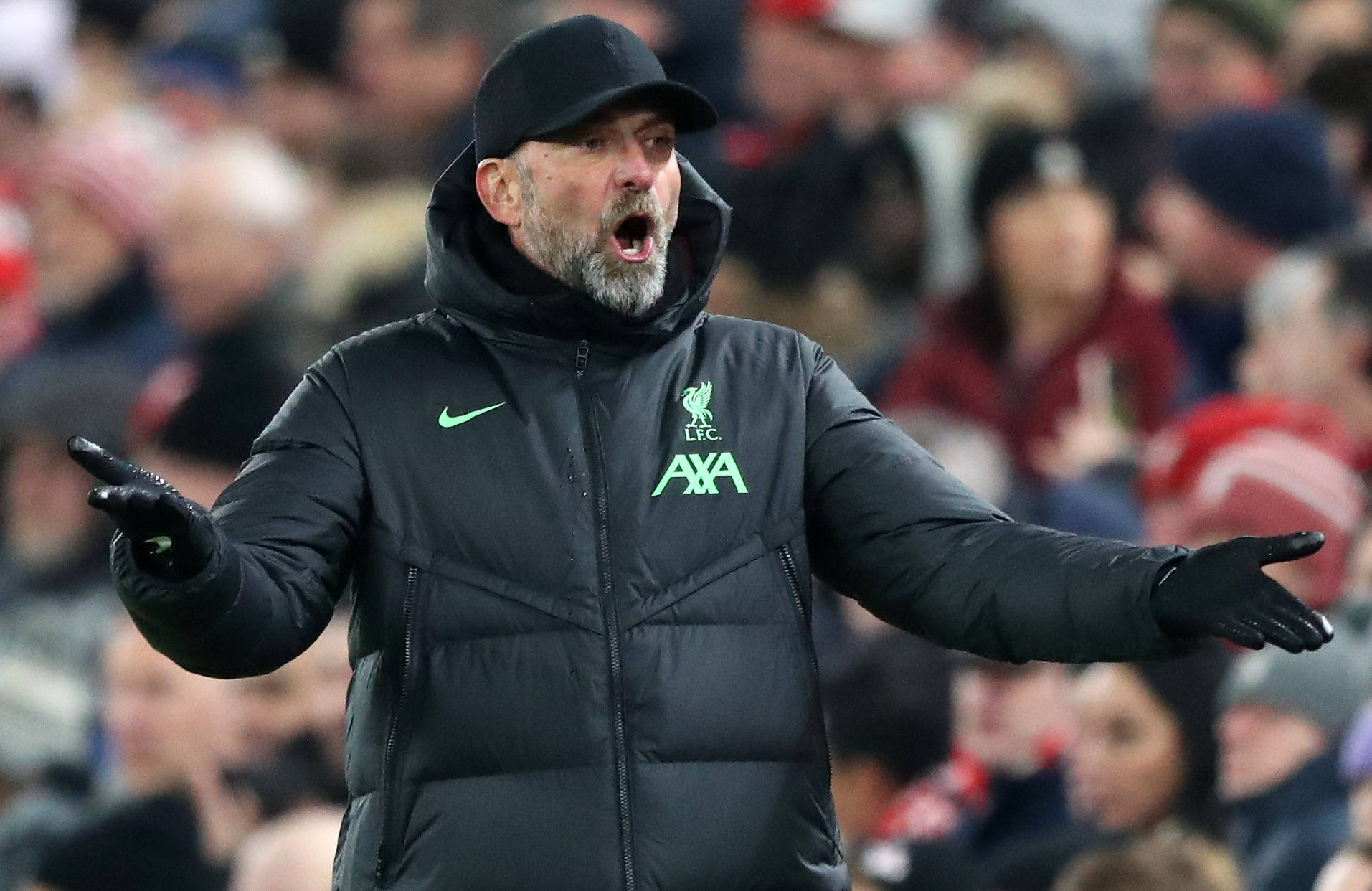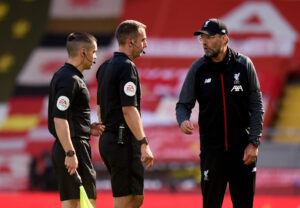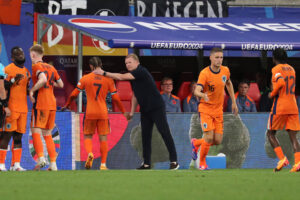Jurgen Klopp is a great manager. Perhaps at the top of many ‘pound-for-pound’ manager lists. He is also a master at motivation and mind games. Following their emphatic entrance into the Carabao Cup Semi-Finals with a win over West Ham, he told the Anfield faithful that he was disappointed with the atmosphere and that the team needed the fans on Saturday night. This is a man who knows the power and sway he has over the supporters. He is also a man who knows how big intangibles such as fans and atmosphere play in occasions such as the one that will be present on Saturday evening. However, in this latest Liverpool v Arsenal match-up, Klopp’s side will have their work cut out against an incredibly well-drilled Arsenal side under Mikel Arteta. The German manager is not shy of a tactical battle.
The Tactical Keys for Liverpool to Defeat Arsenal
Liverpool’s Build-Up Setup v Arsenal’s Press
Trent Alexander-Arnold’s role is multi-dimensional within the Reds’ set-up. In this match-up, he might be better off avoiding situations within a double pivot but rather adopting a role outside the block, almost as a ‘quarterback’. If Arsenal sticks to their man-to-man press, which they will likely do for periods of the game, having the Liverpool star deeper within his own half will draw attention deeper, allowing for rotations to occur further up in midfield.
In a traditional double pivot structure, Gabriel Jesus and Martin Odegaard will press the back line and alternate in a higher position based on who the ball-sided centre back is. After his mid-week performance, it wouldn’t be a surprise if Curtis Jones starts and occupies a deeper role in the left half-space with Bukayo Saka or Ben White tracking him. Having Cody Gakpo and Darwin Nunez start together may be the most effective ploy. Klopp may have his doubts about starting Nunez on the left wing with the defensive responsibility his wingers will have in this match.
Read More: ‘To Be Made Soon’: Premier League Title Contenders Face Crucial Decision Over Attacker’s Future
Gakpo’s second-striker tendencies, where he tends to drop in behind the most progressive player, may help in establishing numerical superiority with an overload in the centre. It will draw the Arsenal centre-backs out and test their rotations. Brighton tested Arsenal on their man-to-man structure, and to their credit, they passed the test with flying colours. It may be more physically demanding to withstand the test with the intensity of an Anfield game and the intangibles and occasion at play.
The issue that comes with a traditional double pivot structure is that Declan Rice would step up onto Wataru Endo. That is a massive red flag for Liverpool. Wataru Endo has provided good performances for Liverpool recently but has clear physical boundaries – when put against a great duel-winner he will struggle. Declan Rice is the best. The solution? Put Trent into a three-man backline in the build-up (doesn’t have to be symmetrical – he can be in a slightly more progressive position), but the principle is that he is the main outlet in the build-up. Allow Curtis Jones or Dominik Szoboszlai to rotate in deeper positions and look to avoid the Japanese midfielder in the build-up, or when the London side tries to show Liverpool towards Endo, through the midfield rotations, they manage to get Rice marking another player, and the build-up can progress in that way.
Read More: The Top 5 Football Kits of the 2023-2024 Premier League Season
The other solution to combatting the man-to-man build-up is to exploit the space behind the press. Tactics is all about trade-offs. The trade-off with an aggressive man-to-man press is the 1v1 situations it can create if the Merseyside team can get individuals and runners to go past their man and set out on a quick break. This is not a sustainable solution but a solution that should be used – dependent on the game state and alongside tempo-management principles.
Tempo management is an aspect that Liverpool has struggled with massively this season. At times, they are too direct and rushed in their build-up and decision-making. Conversely, they are too indecisive and stagnant against defensive structures, especially lower-blocks. The example that comes to mind is the 20 minutes that followed after Ashley Young’s red card in the Merseyside Derby, where instead of accelerating the tempo and speed of play, the six-time Champions League winners were far too stagnant and let Everton settle into a shape.
Against the Premier League leaders, Liverpool has to vary the tempo according to the game state. In the first few minutes, perhaps it is best to drive at the defenders, attempt 1v1 take-ons and play a more rapid tempo. When possession is not sticking, and Arsenal are dominating the ball heavily or even threatening on the counter, it is best to stick to more conventional build-up principles where the aim is to progress through controlled patterns and rotations.
Watch: Last Word on Football Looks at the biggest problem with your Premier League club
A Game of Transition
Transitional moments will play a salient role in deciding the outcome of this top-of-the-table clash. Liverpool have scored four goals from counter-attack situations this season, the 2nd most in the Premier League, behind David Moyes’ West Ham – who rely on the counter-attack as one of their primary attacking options.
As discussed above, breaking the man-marking structure of the Gunners and taking advantage while they ‘transition’ back to their settled zonal structure is a tactic where they can reap success. Their counter-press will also be crucial in ensuring Arsenal do not enjoy the field tilt they like to enjoy but are tested massively in their rest-defence principles when the Reds play vertical through-balls off counter-press regains.
Read More: How Liverpool’s Press is Thriving Again
However, it is a double-edged sword. The opposition has the likes of Gabriel Martinelli and Bukayo Saka. While Trent Alexander-Arnold has had an incredible season, one of the structural trade-offs is that there is always space behind him on the right-hand side of the Red’s defence. A lot of the goals that the Anfield side have conceded, the attack has originated from that infamous right-hand side. It is not the Liverpool vice-captain’s fault – it is a sacrifice that the German manager has made to get the best out of his players.
The Gunners can thrive off transitional situations themselves. The obvious way is to dispossess Liverpool and win their duels before sending their runners into the spaces left within Liverpool’s defence. However, the De Zerbian principle of artificial transitions may be an effective ploy. An artificial transition is when a team in possession can create a counter-attacking state of play. De Zerbi’s Brighton does it through attracting pressure – before playing line-breaking vertical passes that lead to quick breaks for his Brighton side.
Read More: Liverpool ‘Inquired About’ Attacking ‘Prodigy’ From Bundesliga; He Will Leave in the Summer
Liverpool’s midfield is highly aggressive in looking to win the ball off a high press, particularly Dominik Szoboszlai and Wataru Endo. With the likes of Kai Havertz, Declan Rice and Martin Odegaard in midfield, Arsenal certainly can drive past these challenges and have the physical capabilities to break the press. It may be a ploy to ‘set off’ pressing triggers before breaking the press and using the likes of Martinelli and Saka on the transition.
Albeit, a more realistic game model is to not let the game enter the transitional state often as it certainly suits Liverpool’s play style.
Perhaps it is correct to say that Arsenal are the better-drilled and tactically superior side. Perhaps Liverpool are too reliant on individual brilliance. On occasions such as these, tactics alone cannot win a match. Mentality, crowd, and individual performances all make a difference. If Liverpool has stability in their tactical execution, their individuals may push them over the line in what promises to be a scintillating festive occasion.






